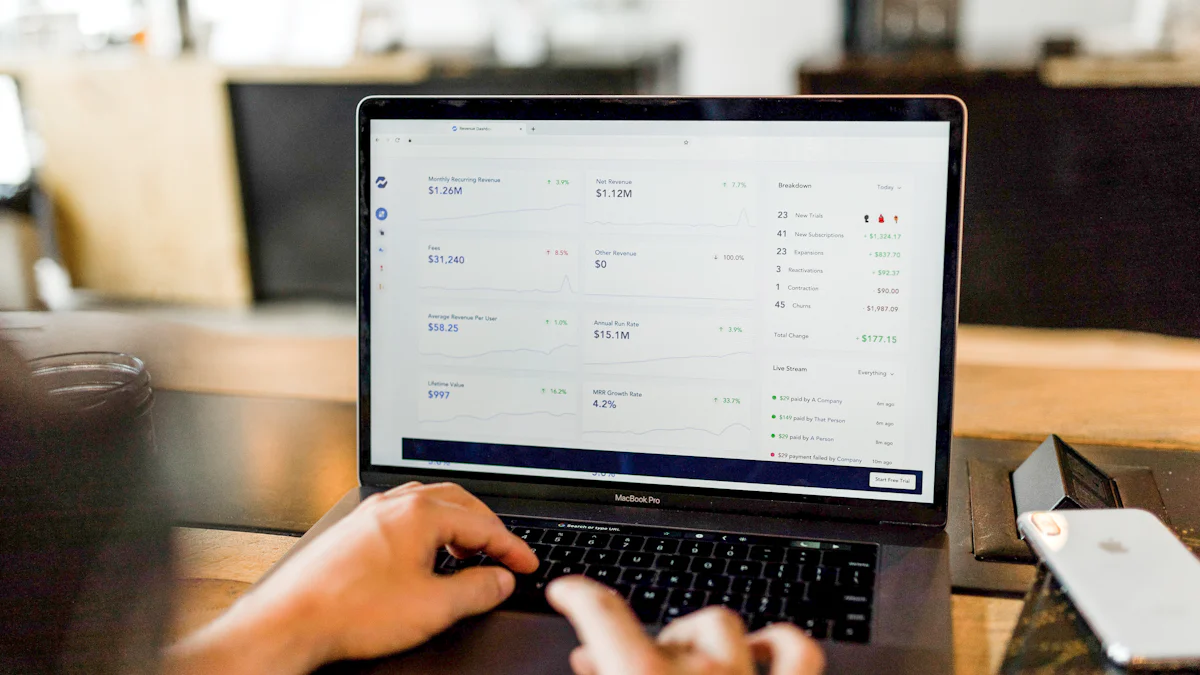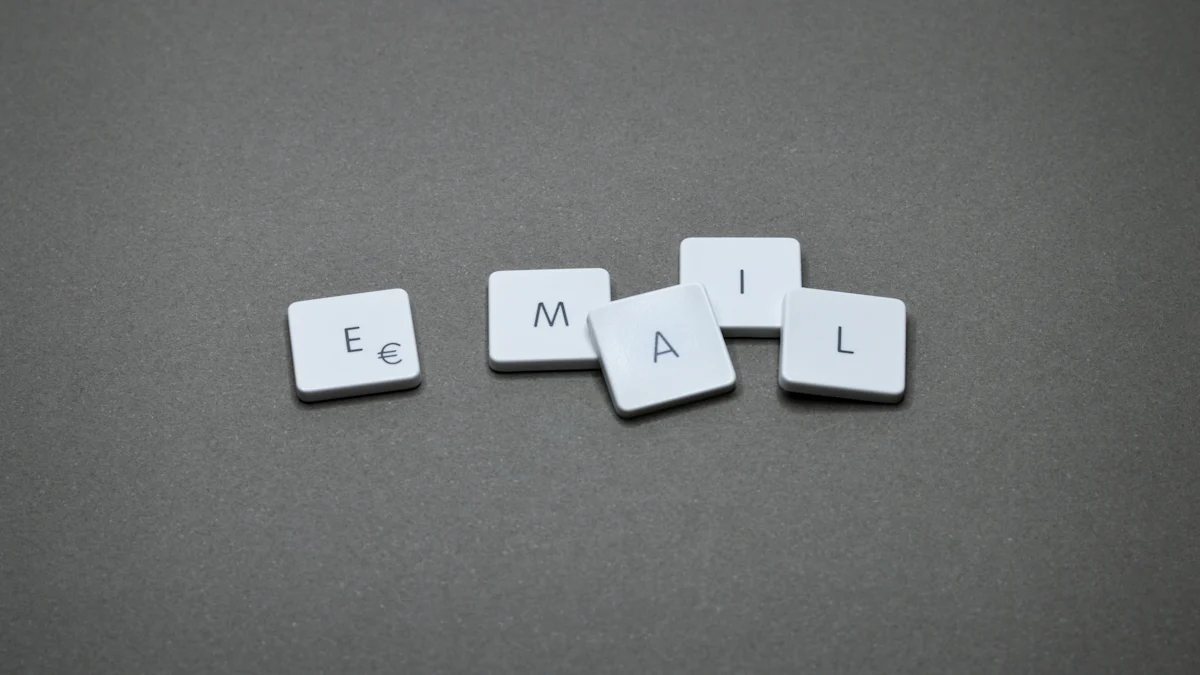


Email engagement measures how recipients interact with your emails. This interaction includes actions like opening, reading, and clicking links. Understanding email engagement is crucial for digital marketing success. Engaged subscribers often lead to higher conversion rates. For instance, segmented emails can drive 30% more opens and 50% more click-throughs. Recognizing these patterns helps refine strategies and boost campaign effectiveness. Email engagement provides insights into what content resonates with your audience. This understanding enhances your ability to connect with customers and improve overall marketing performance.
Understanding Email Engagement
Definition of Email Engagement
Email Engagement refers to the level of interaction recipients have with emails. This interaction includes actions like opening, reading, and clicking links. Businesses use Email Engagement to measure how effectively emails connect with their audience. High engagement indicates a strong connection between the content and the recipient.
Key Metrics of Email Engagement
Key metrics provide insights into Email Engagement. These metrics include open rates, click-through rates, and conversion rates. Open rates show how many people open an email. Click-through rates measure how many recipients click on links within the email. Conversion rates indicate how many people complete a desired action after interacting with the email. Each metric offers valuable information about the effectiveness of email campaigns.
How Email Engagement Differs from Other Metrics
Email Engagement differs significantly from other marketing metrics. Emails often achieve a 50% open rate, while social media posts reach only 3-5% of their audience. Email outperforms social media by 13% and social media ads by 11%. Higher engagement rates in emails suggest a more interested audience. This interest can lead to increased sales and greater customer lifetime value.
Importance of Email Engagement
Email Engagement plays a crucial role in marketing strategies. Engaged recipients are more likely to convert into customers. Businesses can tailor content to match the interests of their audience. This strategy results in more engagement and higher conversion rates.
Impact on Marketing Strategies
Email Engagement directly impacts marketing strategies. High engagement rates mean that email content resonates with the audience. Effective targeting leads to better campaign outcomes. Businesses can refine their strategies based on engagement metrics. This refinement enhances overall marketing performance.
Role in Customer Relationship Management
Email Engagement also influences customer relationship management. Engaged subscribers often feel more connected to a brand. This connection fosters loyalty and trust. Businesses can build stronger relationships through personalized email content. Engaged customers are more likely to remain loyal and continue interacting with the brand.
Measuring Email Engagement

Methods of Calculation
Understanding how to measure Email Engagement helps you improve marketing strategies. Various methods exist to calculate engagement levels.
Open Rates
Open rates show the percentage of recipients who open your emails. This metric indicates initial interest in your content. High open rates suggest effective subject lines and timing.
Click-Through Rates
Click-through rates measure how many recipients click on links within your emails. This metric reflects the effectiveness of your call-to-action. Engaging content leads to higher click-through rates.
Conversion Rates
Conversion rates track how many recipients complete a desired action after interacting with your email. This could include making a purchase or signing up for a newsletter. High conversion rates indicate successful Email Engagement.
Tools for Measuring Engagement
Various tools help you track and analyze Email Engagement metrics. These tools provide insights into campaign performance and audience interaction.
Email Marketing Platforms
Email Marketing Platforms offer features to send high-performing campaigns. These platforms track key metrics like open and click-through rates. Advanced automation and personalization enhance Email Engagement.
Analytics Software
Analytics software provides deeper insights into analyze Email Engagement. These tools analyze data to optimize email design and content. Insights from analytics lead to more effective campaigns and improved ROI.
Evaluating Email Engagement
What Constitutes Good Engagement?
Understanding what constitutes good Email Engagement helps improve marketing strategies. High engagement levels show that recipients interact positively with your emails.
Industry Benchmarks
Industry benchmarks provide a standard for measuring Email Engagement. Industry benchmarks often range between 15% and 25%. Click-through rates usually fall between 2% and 5%. These numbers vary by industry, but they offer a baseline for comparison.
Case Studies
Email Marketing Case Studies highlight successful strategies. Targeted emails based on specific interests lead to higher engagement. Businesses see increased conversion rates through personalized content. These examples illustrate effective Email Engagement practices.
Identifying Bad Engagement
Recognizing bad Email Engagement is crucial for refining strategies. Low engagement indicates issues with content or delivery.
Common Pitfalls
Common pitfalls include irrelevant content and poor timing. Emails sent too frequently may annoy recipients. Unclear calls-to-action confuse readers. Avoiding these mistakes improves Email Engagement.
Warning Signs
Warning signs of bad Email Engagement include high unsubscribe rates. Low open and click-through rates also indicate problems. Monitoring these metrics helps identify areas needing improvement.
Enhancing Email Engagement

Best Practices
Personalization Techniques
Personalization increases Email Engagement by making messages relevant to recipients. Use the recipient's name in subject lines to grab attention. Tailor content based on previous interactions or preferences. Personalized emails can boost sales by 55% and improve click-through rates by 20%. Implement dynamic content to show different products based on user behavior. A/B testing subject lines can also enhance open rates by 10%.
Timing and Frequency
Timing plays a crucial role in Email Engagement. Send emails when recipients are most likely to check their inboxes. Analyze past data to determine optimal sending times. Avoid overwhelming subscribers with too many emails. Maintain a consistent schedule to build anticipation. Balance frequency to keep engagement high without causing fatigue.
Practical Examples and Templates
Successful Campaigns
Successful campaigns demonstrate effective Email Engagement strategies. A welcome email series generated $564,200 in sales within four months. This series achieved over 30% open rates. The Memorial Day campaign stood out and brought in over $90,000. These examples highlight the power of targeted and timely emails.
Template Ideas
Templates provide a foundation for creating engaging emails. Use a clear and compelling call-to-action. Include visuals that resonate with your audience. Offer value through exclusive content or discounts. Keep the design simple and mobile-friendly. Test different layouts to see what works best for your audience.
Additional Resources and Related Topics of Email Engagement
Further Reading of Email Engagement
Books and Articles
Books and articles offer valuable insights into Email Engagement. "Email Marketing Rules" by Chad S. White provides practical tips for improving engagement. The book covers strategies to enhance open rates and click-through rates. "The New Inbox" by Simms Jenkins explores how to engage subscribers effectively. Articles from HubSpot and Mailchimp also provide useful information. These resources help you understand the nuances of Email Engagement.
Online Courses
Online courses teach effective Email Engagement strategies. Coursera offers a course on digital marketing that includes email strategies. Udemy provides a course focused on increasing Email Engagement. These courses cover topics like personalization and timing. Interactive modules help you apply these strategies in real-world scenarios. Learning through online courses enhances your understanding of Email Engagement.
Related Topics of Email Engagement
Email Marketing Trends
Staying updated on Email Marketing Trends improves engagement. Trends like automation and AI-driven personalization are gaining popularity. Businesses use these technologies to tailor emails to individual preferences. Mobile optimization is another important trend. More people access emails on mobile devices. Understanding these trends helps you create more engaging emails.
Customer Retention Strategies
Customer retention strategies play a role in Email Engagement. Engaged customers are more likely to stay loyal to a brand. Strategies like loyalty programs and personalized offers increase engagement. Businesses use data analytics to understand customer behavior. This understanding leads to more targeted and effective email campaigns. Implementing these strategies boosts both engagement and retention.
Email engagement plays a vital role in successful marketing strategies. You should focus on consistent interaction to build brand trust. Applying best practices like tracking open rates and click-through rates helps measure success. Prioritizing engagement ensures customer satisfaction and loyalty. Engaged customers often buy products and recommend your brand. Explore additional resources to deepen your understanding. This exploration will enhance your ability to connect with your audience effectively.
FAQ
Email Engagement measures how recipients interact with emails. Actions include opening, reading, and clicking links. High engagement indicates interest in the content.
Email Engagement impacts marketing success. Engaged subscribers often convert into customers. Understanding engagement helps refine strategies for better results.
Improving Email Engagement involves personalization and timing. Use recipient names and tailor content to interests. Send emails when recipients are likely to check their inboxes.
Email marketing platforms and analytics software track engagement metrics. These tools provide insights into open rates and click-through rates. Analyzing data helps optimize campaigns.
Good Email Engagement aligns with industry benchmarks. Open rates range between 15% and 25%. Click-through rates fall between 2% and 5%. High engagement shows effective content.
Common pitfalls include irrelevant content and poor timing. Frequent emails may annoy recipients. Unclear calls-to-action confuse readers. Avoid these mistakes to improve engagement.
Email Engagement focuses on recipient interaction. Social media posts reach a smaller audience. Emails achieve higher open rates and click-through rates. This suggests a more interested audience.
Email Engagement fosters customer loyalty. Engaged subscribers feel connected to a brand. Personalized content strengthens relationships and encourages continued interaction.
Continue Reading About Email Engagement
10 Game-Changing Project Management Reporting Types!
Unlock project success with 10 must-know reporting types! Track progress, manage risks, and stay on budget like a pro.
Lewis
Mar 03, 2025
10 Must-Have Marketing Agency Reporting Tools for Your Success
Optimize your agency's performance with top reporting tools. Explore analytics, social media, SEO, and more for data-driven decisions and efficiency.
Lewis
Oct 09, 2024
15 Best Software Reporting Tools for 2025
Explore the top 15 software reporting tools for 2025. Compare features, pricing, and usability to find the best fit for your business needs.
Lewis
Oct 08, 2024
2025 Best Data Integration Solutions and Selection Guide
Explore top data integration solutions for 2025, enhancing data management and operational efficiency with leading platforms like Fivetran and Talend.
Howard
Dec 19, 2024
2025 Data Pipeline Examples: Learn & Master with Ease!
Unlock 2025’s Data Pipeline Examples! Discover how they automate data flow, boost quality, and deliver real-time insights for smarter business decisions.
Howard
Feb 24, 2025
2025's Best Data Validation Tools: Top 7 Picks
Explore the top 7 data validation tools of 2025, featuring key features, benefits, user experiences, and pricing to ensure accurate and reliable data.
Howard
Aug 09, 2024


